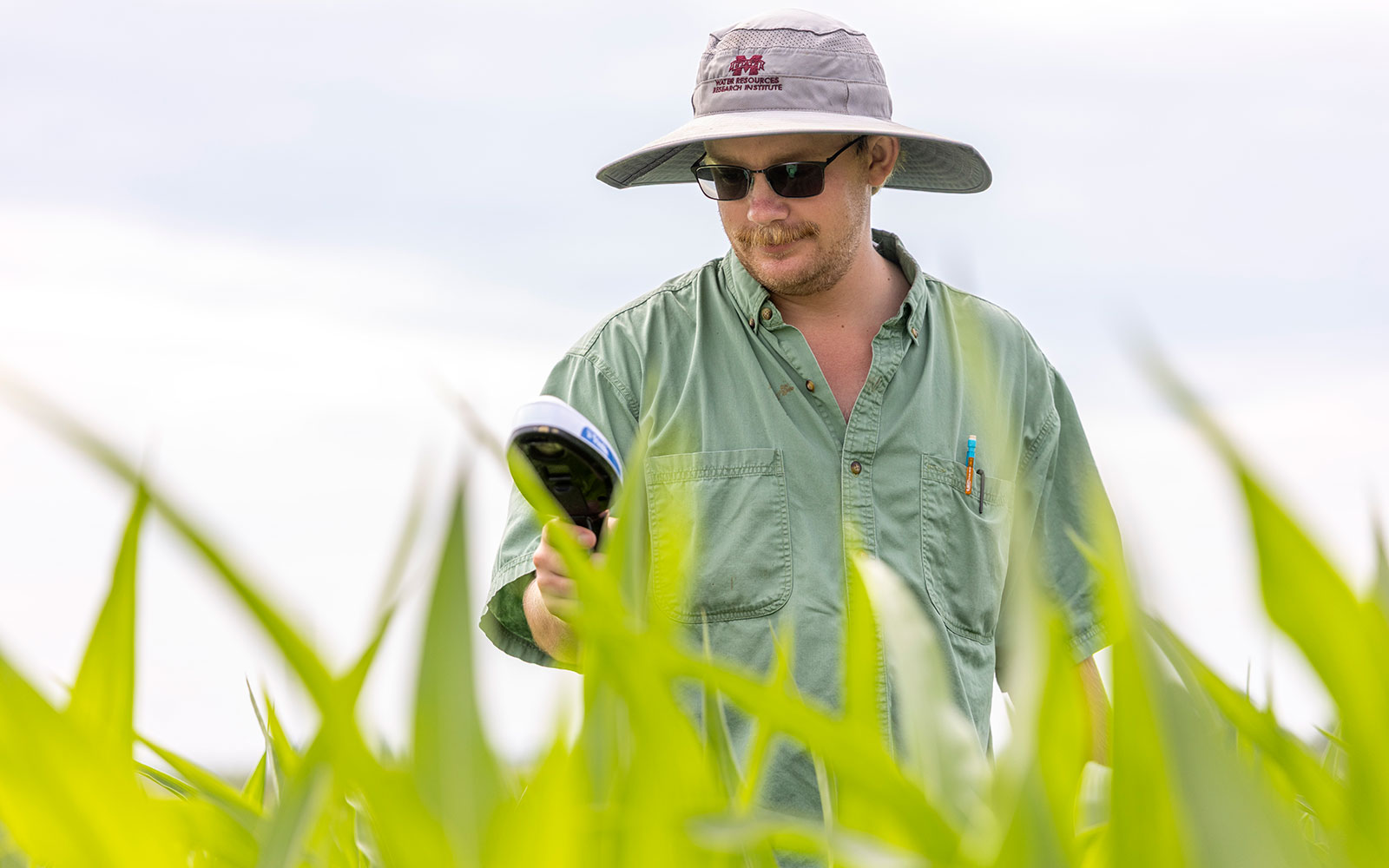News
Galloway Focuses on Practical Strategies to Boost Yields and Farm Profitability

No two crop fields are alike—so why manage them the same way?
That's the question driving Lane Galloway, a research associate with the Water Resources Research Institute at Mississippi State University. His work focuses on helping farmers improve profitability by using water, fertilizers, and other resources more efficiently and sustainably.
"I'm focused on alternative management systems, where we look at farming from a system perspective," Galloway said. "By changing management practices, like row spacing or tillage, we can study how that affects surface runoff. Our goal is to reduce nutrient concentrations—like nitrogen and phosphorus—in runoff, while keeping systems productive and profitable."
Galloway's on-farm research projects throughout the state are funded by the U.S. Environmental Protection Agency. He also receives research funding support from the Mississippi Corn Promotion Board and the Mississippi Soybean Promotion Board to conduct research on the Mississippi Agricultural and Forestry Experiment Station's Black Belt Branch.
A native of Auburn, Alabama, Galloway earned degrees in soil science and agronomy from Auburn University. As an undergraduate, he worked in the university's variety testing program, growing crops under a wide range of conditions. One key lesson stuck with him: farming becomes more profitable and sustainable when growers tailor their practices to the unique characteristics of each field.
At WRRI, Galloway now applies that principle by dividing fields into management zones and testing different combinations of seeding, tillage, irrigation, and fertilization. He accounts for variations in soil texture, elevation, and drainage—factors that can have a major influence on both yields and nutrient runoff.
By customizing inputs for each zone—using less fertilizer where yields are historically low and adjusting strategies in higher-performing areas—farmers can avoid unnecessary costs while improving overall productivity.
Technology plays a key role in Galloway's research. He uses rainfall simulators to measure how much nitrogen runs off newly fertilized areas after major storms. To study how crops respond to sunlight, he uses line quantum sensors to measure light penetration through the crop canopy.
Galloway and his coworkers are out in the elements throughout the growing season, conducting experiments and collecting water and soil samples for analysis.
"A lot of our research is very practical—we're trying to help farmers with cost-effective solutions they can actually use," he said. "The reality is that many farmers aren't making a lot of money right now because inputs are so high. We're taking a close look at those inputs and offering strategies that help improve the bottom line."
The Water Resources Research Institute at Mississippi State University is a leader in addressing critical water and land use challenges. Collaborating with leading water resources officials, the institute develops innovative research solutions that benefit Mississippi, the region and the nation. Learn more about the institute at www.wrri.msstate.edu.
View More News